

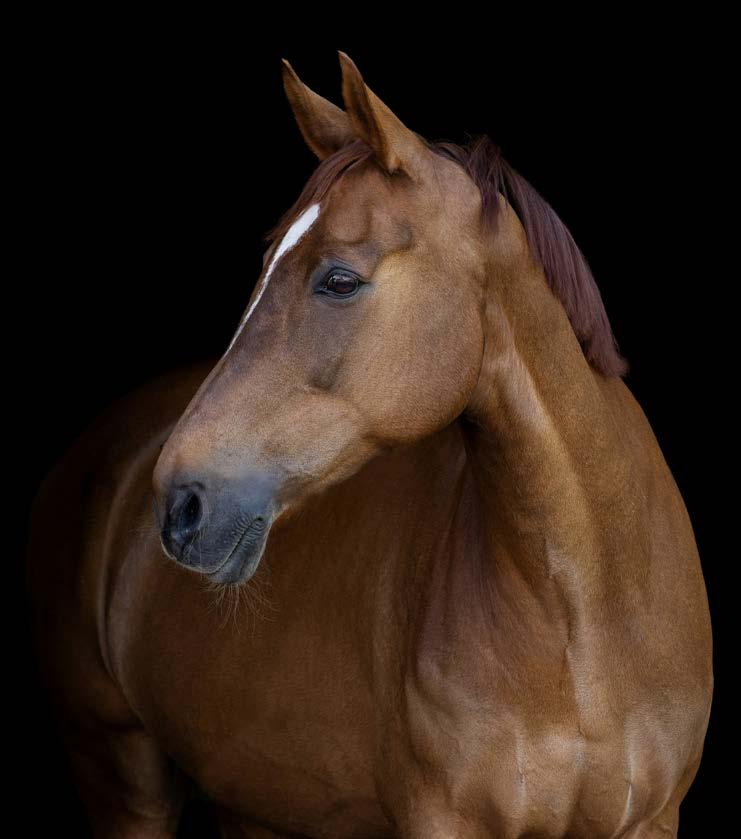


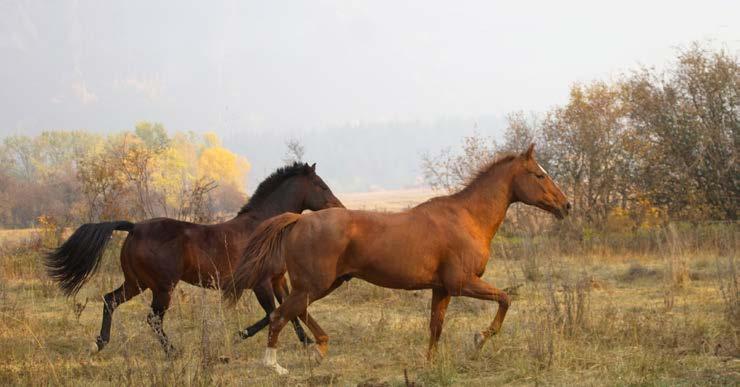
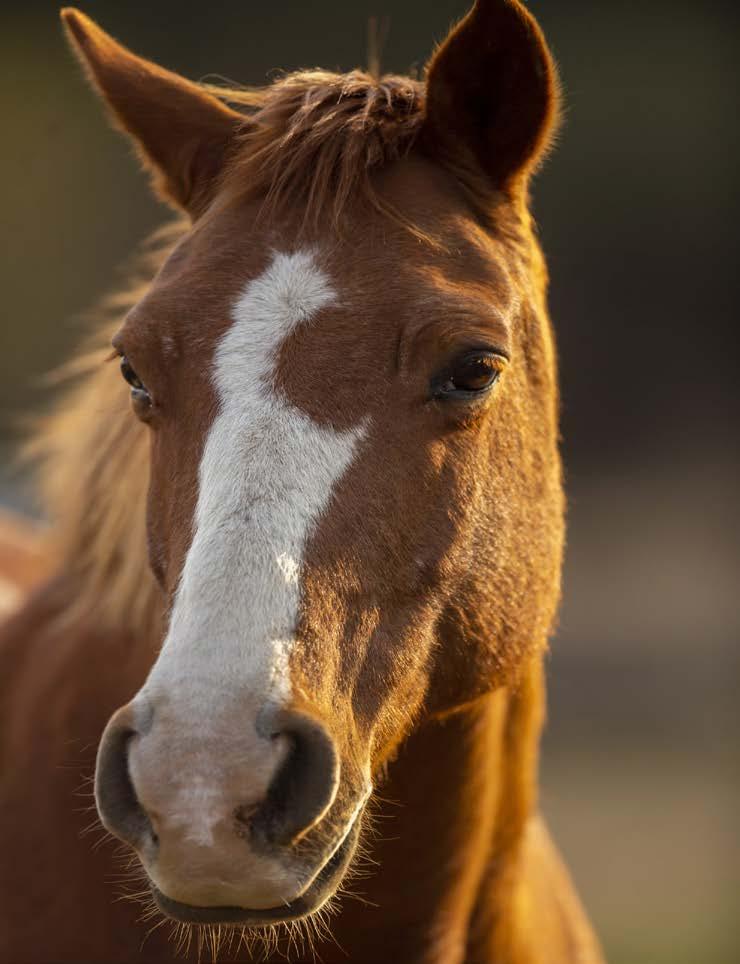
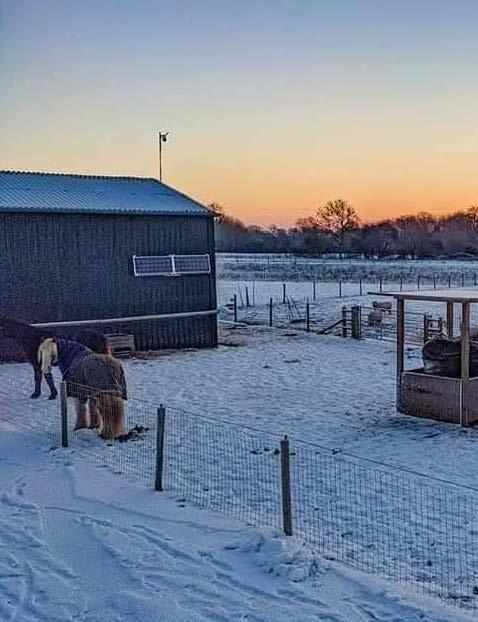















Snow and ice in winter can be a nightmare. They make people stay indoors or drive slowly, making our lives difficult and our journeys longer. EcoGrit Snow and Ice Melt is a safe, eco-friendly and powerful ice melt solution designed to melt ice faster than rock salt without the harmful effects of Rock Salt or Urea. It is non-corrosive and non-toxic, making it an excellent option for children and pets.
The formula does not leave behind any messy residue or cause any damage to surfaces. It contains biodegradable natural ingredients that don’t harm the environment or cause long-term damage. EcoGrit is easy to apply with no fuss, making it perfect for home and business use. The product’s powerful nature makes it a reliable and convenient alternative to salt, making it an ideal choice for everyone concerned about the environment.
EcoGrit is an all-natural snow and ice melt made from food industry by-products. This rock salt alternative is a safe and non-toxic deicer. It’s also pet, child, and plant friendly and environmentally friendly.
EcoGrit melts snow and ice quickly and can last up to a week for long-lasting protection. The rock salt alternative is easy to apply, making it the perfect solution for sidewalks and driveways. You can even use it to prevent ice build-up on walkways in the winter months.
With EcoGrit, you won’t have to worry about harming your environment or health while keeping your walkway protected from the elements. You can walk safely without shovelling snow or using toxic chemicals.
• EcoGrit Ice Melt
• Safe for Children, Pets & Horses on any surface
• Non-Toxic Light-Weight Easy Application
• Protects from Snow and Ice for up to a week
• 80% less corrosive than rock salt
• Environmentally friendly (all natural ingredients, contains no urea)
• Concentrated so less product is needed
• Available in easy to carry buckets (5kg) with a scoop or 1.2kg shakers
• Also available in covered tonne bags to store outside
• No handling or storage restrictions
• Can be distributed using traditional gritting methods or can be mixed with water to create a safe sprayable deicer





Winter brings unique challenges to horse owners. Ensuring that your horse yard is well-prepared can help keep your horses safe, healthy, and comfortable throughout the colder months. Proper winter preparation involves management of the yard surface, shelter, water supply, feeding, and safety considerations. Here is a comprehensive guide to help you get ready for winter.
A well-drained yard surface is crucial during winter, as wet, muddy areas can lead to health problems like mud fever, thrush, and lameness. Begin by inspecting the entire yard for areas prone to waterlogging or becoming muddy.
• Drainage: If puddles linger after rain, consider improving drainage by creating direct routes for water to run off or installing drains. Elevated bedding areas or ridges can also help divert water away from feeding and turnout zones.
• Surface Management: Regularly harrow or scrape the surface to remove mud and manure. In particularly muddy spots, adding stable or clover-based bedding can help absorb moisture and provide better footing.
• Footing: Maintain firm, even ground to prevent slips and injuries. If the yard becomes too slippery, consider spreading sand or fine gravel onto muddy patches for better grip.
Shelter from wind, rain, and cold is vital during winter. In the UK, weather can be unpredictable, so ensuring your horses have access to appropriate shelter is essential.
• Stable: Make sure stables are clean, dry, and wellventilated, with bedding sufficient for insulation. Deep bedding like straw or shavings provides warmth and absorbs moisture.
• Shelter Structures: If permanent shelters are not available, consider portable field shelters or sturdy tarpaulins. These structures should be windproof, waterproof, and easily accessible.
• Field Shelters: Construct or repair natural or wooden field shelters to provide adequate protection, especially in high-traffic or exposed areas.
Fresh, unfrozen water is critical for your horse’s health, especially in winter when dehydration risks increase due to reduced water intake.
• Water Troughs: Use insulated or heated water troughs to prevent freezing. Regularly check and clean them to prevent algae buildup.
• Frozen Pipes: Insulate water pipes to prevent freezing. Consider installing automatic waterers with heating elements.
• Check Frequently: During cold snaps, multiple checks of water availability are necessary. Avoid letting water sources freeze solid to keep your horses properly hydrated.
Winter diets should compensate for increased energy demands and reduced grazing options.
• Forage: Ensure ample hay or haylage is available, as pasture grazing is limited in winter. High-quality forage supports gut health and provides insulation.
• Supplements: Consider adding mineral and vitamin supplements to prevent deficiencies.
• Concentrates: Depending on the horse’s workload and condition, you might need to supplement their diet with energizing feeds, especially if they are at work or have limited access to grass.
• Feeding Routine: Feed at regular times and in individual feed buckets or troughs to prevent spoilage and ensure each horse gets its share.
Winter storm conditions can pose additional risks, so review safety measures.

• Fencing: Check fencing for damage or gaps that may be exposed during storms. Secure gates and ensure fencing is sturdy to prevent escapes.
• Lighting: Install adequate lighting in paths and shelter areas for safe access during dark winter evenings.
• Remove Hazards: Clear fallen branches, loose debris, or slippery objects from the yard and pathways.
• Health Checks: Regularly monitor your horses for signs of cold stress, lameness, or illness. Pay special attention to old or sick horses who may need extra care.
• Record Keeping: Keep a diary of weather conditions, water checks, and any problems encountered to inform future preparations.
• Staff and Volunteer Support: If you have helpers, ensure they are aware of winter safety protocols and first aid procedures.
Preparing your horse yard for winter is an ongoing process. Early preparation minimises risks associated with cold, wet, and muddy conditions. Always prioritise your horses’ safety and comfort, ensuring they have dry bedding, adequate water, shelter, and proper nutrition. Keeping a close eye on weather forecasts and performing regular inspections will help you respond quickly to changing conditions.
By taking these proactive steps, you can ensure a safer, healthier winter for your horses, allowing them to enjoy the season comfortably and safely in their UK yard.
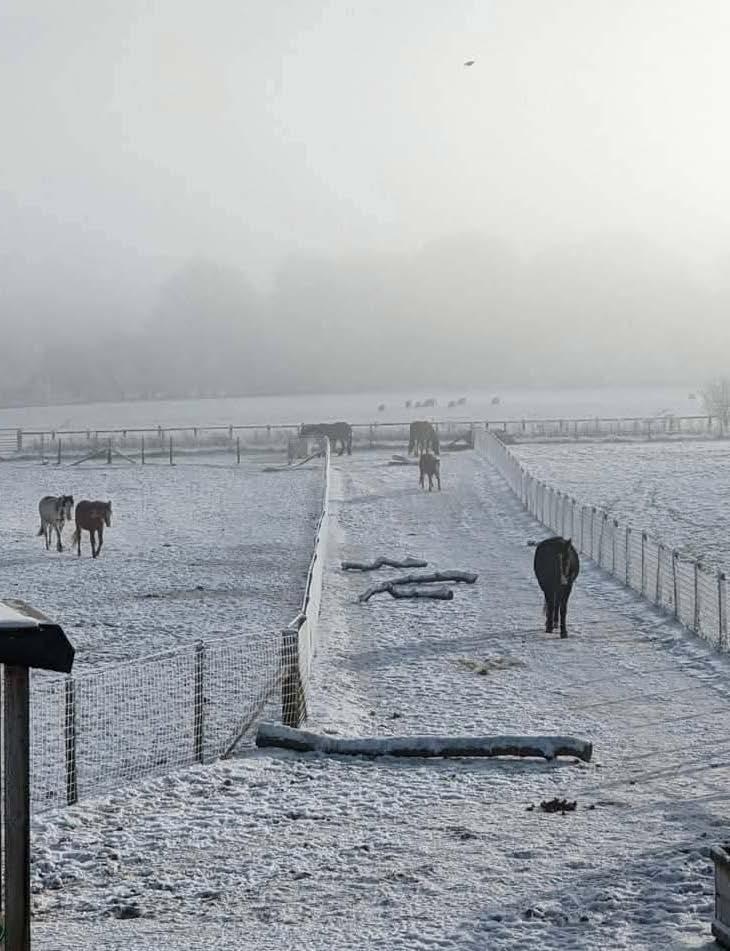

Spring is one of those times of year that as a horse owner we find comes with mixed emotions. On one hand, we welcome the promise of longer warmer days and blissful riding and on the other comes the dread of the risk of Laminitis.
Every year the Spring grass seems to come up from nowhere, shooting up quicker than the horses can graze it, and with it, a whole host of issues.
I remember when I used to dread the arrival of Spring, the bloated tummies and the green grassy poo’s, constantly not knowing how much grass to let my horses eat and worrying constantly about how long they were turned out.
Some horses seemed to get away with it, while others came in with tummies like barrells. The unlucky ones quickly went footsore and cresty, then grass time was revoked.
I wanted a way of keeping my horses where they had ample movement and an enriching environment, without the Spring grass risks. Research lead me to discover track systems, and low and behold I had my answer.
A track system enabled me to be able to manage my horses weight and grass intake without the fear of laminitis or obesity, without comprising their well-being. Freedom to move and eat, 24hours a day, all year round, without the issues caused by Spring grass.
Now I no longer worry about the Spring, and can solely look forward to warmer, longer days riding and beautiful green surroundings, without the risks of the grass for my horses or comprising their welfare.




A track system or ‘Paddock Paradise’ is an exciting new way of keeping horses that was created by Jaime Jackson, who spent years researching into horses’ natural environments and studying how they live in the wild.
Rather than being turned out into paddocks, a track is fenced along the perimeter of the paddock (see image), allowing for restricted grazing and increased movement.
The horses navigate different surfaces which help barefoot horses build up strength in their hooves, and learn to cope with different substrates.
Horses are encouraged to forage as they would naturally and are fed a diet of ad lib meadow hay situated at various feeding stations around the track.

Obstacles mimicking natural borders are also placed around the track, such as mounds, rocks and logs to climb over and scratching posts. Points of interest are created, such as areas of wood chip or sand pits for rolling/sleeping, and salt licks and other foraging opportunities like hedgerows or trees if you have them.
Foraging and increased movement also ensures that horses are stimulated and free from the boredom that they may experience in a traditional paddock or whilst stabled.
A track system is perfect for horses and ponies of all ages, breeds and heights and especially those that are prone to weight gain, laminitis/ cushing’s, arthritis, boredom and other diseases and illnesses caused by the high sugar and starch levels found in grass.
In a nut shell, a track system:
• Increases movement whilst restricting grass intake
• Mimicks the horse’s natural environment
• Allows horses to express their natural behaviour
• Discourages vices and unwanted behaviour
• Creates a stimualting environment for the horse
• Has many health benefits including a lower risk of stomach ulcers and laminitis.
As anyone will know who has kept miniature ponies or cobs, or any “good doer” they only have to look at the grass to put on weight and managing their grazing at our farm was a constant battle. We tried strip grazing, muzzles, restricted grazing (stabled during the day, out a night etc) and all we ended up with was ponies who learnt to gorge themselves stupid at any given chance and/or who were downright miserable.
Research led me to Paddock Paradise or Track Systems and it made such perfect sense to me that I trialled a small track around an acre paddock.
For the first time I was able to manage their grazing without having miserable ponies. They were still able to practise their natural behaviour: grooming one another and playing whilst having the space to move around and graze at different hay stations to their heart’s content. I was happy and so were they.
I then began to learn that the other benefits of track systems were far beyond just helping good-doers and found that because they increase movement and mimic a natural environment, they are beneficial to all horses, whether that be an old retired horse with arthritis who needs movement, or a young excitable horse who was craving stimulation.
And Abbotts View Livery was born!






Abbotts View Farm is a small family run farm based in the beautiful village of Aston Abbotts, situated between Aylesbury and Leighton Buzzard in Buckinghamshire.
Our farm is home to a variety of animals and we breed alpacas, and keep sheep, pygmy goats, ducks, rabbits and g-pigs!

Abbotts View Livery was created by me, Amy, the eldest daughter of three, as I felt there was need for a livery for like-minded people and their barefoot equine partners!
The ‘traditional’ way of keeping horses (shod, stabled and turned out onto lush grass) that has been performed for many years works for some, but for most has huge faults and negative impacts that need addressing, to enable horses to be healthier both physically and mentally. We need a way of keeping horses that provides more turn-out, decreased behavioural problems, more movement and better management of the high sugar and starch grasses of England that are detrimental to the health of the majority of today’s horses (think EMS, Laminitis, obesity, cushings).
Being able to keep horses living out 24/7, year round, whilst still managing grass intake and your horses mental and physical well-being is a huge task, whether your horse is retired or in full ridden work. A track system is a new and exciting way of keeping horses that provides all of these things, and I believe, is the key to having mentally and physically healthier horses.
So after a lots of research, budgeting, planning and dreaming my vision of running a yard came to fruition! I feel so excited to be able to create a livery environment that I dreamed about for me and my horses, and I’d love to share it with you and your equine partner.
My mission is to create a livery yard for like-minded people where their horses are free to express their natural behaviours and is a place of retreat, where people challenge themselves to build on their relationships with their horses and offer encouragement, guidance and support to one another.
“Track Systems are the key to having physically and mentally healthier horses” ~ Jaime Jackson
Our type of livery is perfect for the majority of horses as it aims to mimic the horse’s natural environment and gives them freedom of choice, but is especially good for those who suffer from today’s common health problems, such as obesity, laminitis, and arthritis, or horses that do not like being stabled, suffer from boredom, or just crave a more stimulating and enriching environment.
We currently have two tracks systems that run alongside each other so that the two herds can interact over our horse safe fencing.
The tracks are around 6 - 8 metres wide with larger areas for sleeping, rolling and playing and a huge hardstanding and barn at the front.
Our herds are currently split into one herd of geldings and one herd of mostly mares (currently two geldings).
Meet each herd and our horses by clicking here.
Each track consists of the same features:
• A limestone hardstanding/corral situated at the front of each track, with a sheltered running water trough
• A large walk in/out barn with Aubiose bedding areas for use as the horses please, all year round
• A 450 meter long track which widens at the corners to allow ease of turning at speed
• NEW FOR 2023 Sand pits - 8m x 8m sand pits for use as the horses please. Mainly used as a play area and for snoozing.
• A large area with a mound for playing, snoozing and rolling
• Very minimal grass - with the option of grass in the track middles if horses are not grass effected/require it. The horses diet is 90% hay with only minimal grass roots to nibble on which helps to promote more movement. See Unsurfaced Track System?
All year round, our horses are fed ad lib hay that is low in sugar and low in starch (ESC -10%) to mimic the closest we can get to what horses have evolved to eat in the wild (long, brown, low sugar grass, little and often).
Our hay is always organic, which means it is not sprayed with chemicals, and is made up of a mixture of meadow grasses. We get our hay tested every year to ensure it is below 10% sugar and starch combined.
However, we DO NOT FEED THE MAJORITY OF HAY LOOSE. We believe feeding hay loose on the ground or in feeders is unnatural and also contributes to horses being over-weight and not moving enough. The grass that wild horses would have eaten would not have been as easy to eat as loose hay – they would have to forage and work hard to bite, pull and tease it out of the ground using their teeth and lips. We do occasionally spread very small piles of loose hay around the track to encourage movement.

We place the majority of our haynets in hay boxes to mimic how horses would spend most of their time eating – heads down!
Horses would also naturally browse from hedges and trees, so around 20% of our haynets are tied up high to mimic this.
• Ad-lib hay stationed around the track, in forms of various sized and sized holed slow feeder haynets situated in hay feeders or hung up, spread around the tracks, with a large double netted round bale for ‘back-up’ (once the hay nets are running low!)
• Natural Obstacles placed around the track in the form of various sizes of logs and branches to encourage foraging, lifting those legs and occasional jumping!
• Salt Licks and other foraging opportunities. We have planted trees and hedges along that track that in future will grow up and along the outside of the track so that the horses can enjoy different tastes and smells. We also forage different beneficial plants and hide these around the track for them to find, and have a horse herb garden by the round pen for owners to offer to their horses.
• Enrichment we have scratching brushes and in the Spring and Summer we forage beneficial herbs and plants and hide these around the track for the horses to seek out

We use a variety of different sized holed haynets. We have haynets from 25mm up to 40mm which are spread out around the track and corrals. Some are double netted, and some are single netted, but this changes depending on how easy to eat a particular bale is.
The hole size we use depends a lot on what hay we have in at the timehay that is finely cut is harder to get out, whereas hay that is cut in long strands is much easier to get out of a net. All our hay comes from the same place, but still varies in length etc. depending on what part of the 300 acre farm it came from.
It is also important that the hay is spread out to encourage movement.
We use double netted round bales aswell as haynets, that are situated at the front of the tracks. Previously we tried bales on their own, but found that without the addition of haynets, the horses would ‘park’ at the bales and only move when they wanted a drink. With fresh haynets of different sizes spread out around the track the horses are always on the move from one to the other – much harder work for me, but much better for the horses!

The one or two bales that we do put out are for ‘back up’ for when the nets are running low, but these are double netted, to prevent ‘parking’.
Occasionally we spread out very small piles of loose hay, such as when they ignore a particular haynet for a few days or one gets very wet.
Our haynets are made by Nibbleaze and are designed to be soft and kind on lips and teeth. We also use the soft mesh haynets from Shires, although they are a little harder to eat from, which helps as it provides variety.
Check out photos of our horses enjoying their hay in our gallery.
Once it was clear there was a demand for this type of livery and after running the track livery for two years using a mixture of stock and electric fencing, we decided to go all out and invest in horse safe fencing.
After a lot of research, it was clear that the safest options were horse netting, or horse rail. We decided to go for horse netting, as this is also safe for sheep and other livestock meaning we can use the sheep to the horses advantage by putting them on track or in the winter paddocks to eat down the grass before the horses go on.
Not only does this fencing give me as a yard owner huge peace of mind as it is extremely unlikely for the horses to injure themselves on it, it also gets rid of the worry completely of horses escaping into the middle from the track in the peak of spring and getting colic or lami, which they could do when it was electric fencing.


We chose ‘Hampton NET™’
“Hampton NET™ is the revolutionary fencing option for all discerning horse owners and breeders.
We have invested in purpose built equipment to produce fencing that raises the bar both in terms of strength, functionality and safety.
Manufactured at our factory in Northamptonshire, Hampton NET™ equine fencing features the smooth, animal friendly yet strong knotted joint.”
The holes in the netting are designed to be too small for a hoof to get caught in, and sealed with a specially designed knotting system which means the wire cannot be moved to make the holes bigger or smaller.
Horses, being horses, can injure themselves on just about anything, but we have huge confidence in this fencing to provide the best possible security and safety for our liveries.
My new book ‘Horse Track Systems: A How To Guide to a Healthier Horse in Body and Mind’ was released end of November 2022 and is OUT NOW!!!
Over 100 five star reviews on Amazon! Read some of my favourites here.
“I honestly thought this book would just repeat what is available on social media but I was soooooo wrong.
Yes you can find similar info for each individual aspect online but that means dedicating alot of research and time into things like fencing, housing, surfaces, nutrition, enrichment etc and I guarantee you’ll be so overwhelmed with information/opinions you’ll end up just winging it likely resulting in costly and/or avoidable mistakes along the way.
This book has it all and more. Things that I hadn’t even thought about and would have done wrong had I not read this book but yet make so much sense that I’m left wondering why I hadn’t thought of it in the first place.
I haven’t read the entire book yet but if it continues along the same vein as what I have read then the price for the book pays for itself in the costly mistakes I have avoided.
Honestly if you are considering a track system you need this book and if for some unfathomable reason you decide its not for you I bet you could resell it for what you paid.
Buy directly from me for a SIGNED COPY by clicking here (dispatched in 3-5 working days) UK ONLY
For the rest of the world please buy through Amazon. Please note that some countries will not be able to buy the standard print version of my book and will need to purchase the premium colour print version (Australia and New Zealand)
If you would like a signed copy and you live outside the UK, please contact me for a price for postage to your country.
A track system or ‘Paddock Paradise’ is an exciting new way of keeping horses that was created by Jaime Jackson, who spent years researching into horses’ natural environments and studying how they live in the wild.
Rather than being turned out into paddocks, a track is fenced along the perimeter of the paddock, allowing for restricted grazing and increased movement.
Laminitis, colic, obesity, EMS and other equine health problems are on the rise and the majority of these are caused by incorrect management. A Track System looks back to nature, and aims to mimic this within a domesticated environment creating a way of living that




is closer to what nature intended, and in turn, creating horses that are healthier in both body and mind.
This book goes into detail about what a track system is and how you can create, build or improve your own track for either or your own horses or as a livery business, to create happier and healthier horses.
This book includes:
• What is a track system?
• Detailed descriptions and step by step instructions on different surface options and how to implement them
• Track system templates
• Introducing new horses on track
• Creating points of enrichment
• Running a track system as a business
And much, much more!






Situated within the quite village of Gawsworth in Cheshire Near Macclesfield and Congleton.
Built brand new from scratch at the beginning of 2022.
This natural boarding track livery features a brand new 50ft x 100ft steel portal framed barn with custom built holding/integration pens, Aubiose Horse Bedding, scratching posts, mineral licks and a cooling misting system.
The barn is open all year round and the horses have full access to it 24/7 - 365.
Gawsworth track livery grows all its own meadow hay which is distributed around the 1000 metre fully surfaced track in Trickle Net’s.
The track is enclosed with horse safe “horse netting”. This £30,000 fencing system greatly reduces the risk of fencing related injuries.
Gawsworth track livery offers a home to all barefoot horses but especially to those who are overweight, laminitic or suffer from metabolic conditions such as EMS and cushings.
The Gawsworth track livery track has been designed to encourage horses to move around from hay station to hay station within a herd.




The water source is situated in the barn which is the furthest point away from the hay, again this encourages more movement. Sections of the track are surfaced with sand, others with rougher rock, stone and grit.
These surfaces mimic the altering terrain horses would naturally move over out in the wild, this movement plays a huge part in our hoof rehab cases.
Stimulation from the ground see’s our horses recover from navicular, collapsed heels, under run heels, poor horn quality and deformities from laminitis.
Our track livery is a zero grazing system which means we have great success with grass sensitive horses and laminitics, we also don’t have to worry about horses developing laminitis whilst here with us.
Many of the horses at Gawsworth track livery have reached the end of all traditional veterinary and farriery medicine and their options have either been to keep them locked in a stable or put to sleep.
Here they live a life of freedom without the risk of obesity or laminitis all whilst walking up to 7 miles per day and walking their hooves back to health.



It’s not grass... It’s not sugar... It’s not inflammation...
It’s hoof capsule manipulation — the routine, repeated reshaping of the hoof by human hands.
To the esteemed scientists in the white coats, working in labs: Instead of forcing tubes up horse’s noses , overdosing them on sugar to artificially induce laminitis, subjecting them to invasive, distressing experiments — only to euthanize them in the name of data — we have a simple request. Show us sequential X-rays, taken over several days, of P3 shifting independently of the hoof capsule without any hoof capsule manipulation.
No pain. No cruelty. No invasive procedures.
Just evidence — the kind that genuinely supports your theory.





Years of damage from multiple hoof care approaches don’t heal overnight—it takes time, consistency, and patience.
Once the hoof was given the chance to heal naturally— by allowing the toe wall to make proper ground contact instead of constantly rasping to chase a textbook hoofpastern axis—the transformation was remarkable. The horse went from being lame and in pain to moving soundly and comfortably over all surfaces and in every gait.
Despite the involvement of top farriers and vets across the UK, no one considered that simply allowing the horse to grow the hoof Mother Nature designed for him might be the solution.
Everything imaginable was tried—every method, every treatment—but his condition only worsened. His quality of life declined, spending months on box rest with no improvement.
In the end, I didn’t need a white coat or letters after my name to help this horse. I just had to listen to what he needed and get out of nature’s way.
What we do at GTL is reliable, predictable, humane and cheap (compared to veterinary and farriery costs).

Trimming to the hard sole plane restores the hoof to its intended surface area, giving the horse the support it naturally needs.
Unfortunately, many farriers and trimmers rely on a personal preference trimming style —picking, choosing, and guessing where to trim to —rather than following the hoof’s natural structure.
Over time, this inconsistency leads to damage, deformation and imbalances resulting in common issues like under-run heels, bull-nosed walls, elevated heels, negative palmar/plantar angles (NPA), and more.
The most damaging and life threatening issue many horse’s face is P3 “rotation” which is something we are passionately fighting to stop, if only the people causing these problems would wake up and realise that their trimming style is actually the cause and not the cure.
By consistently trimming to the hard sole plane and respecting the natural form of the hoof, we set the foundation for long-term soundness and health.

When Rubsie first arrived at GTL last summer, she was significantly overweight and showing signs of metabolic issues. Had we run blood tests at the time, it’s likely she would have been diagnosed with Equine Metabolic Syndrome (EMS).
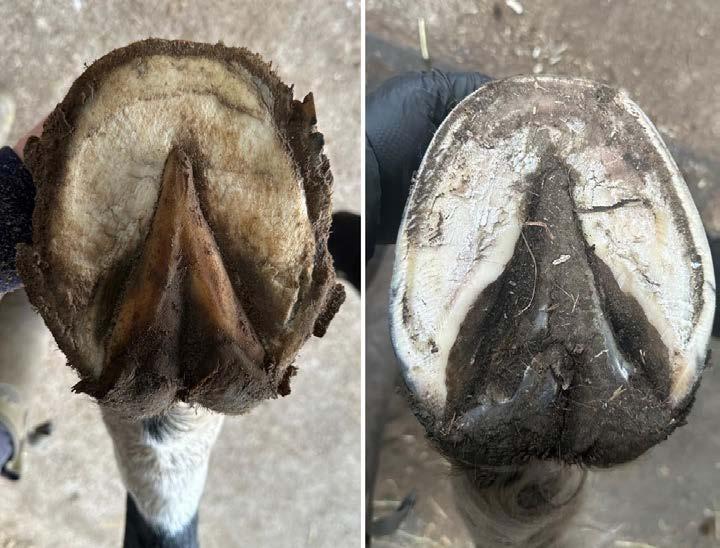
Just prior to her arrival she was also in a full set of shoes, which had contributed to her hooves being weak and poor in quality. In the early stages, she experienced several hoof abscesses, and much of her hoof wall crumbled away, leaving her primarily walking on her soles.
For several months, she required hoof boots on all four feet for protection and comfort.
As shown in the images below, her hoof wall is now growing in stronger with improved horn quality, thanks to a more appropriate diet. Her frogs are expanding, and her digital cushion is no longer contracted—it’s becoming thicker and more robust.







Hoofing Marvellous are a team of professional barefoot specialists dedicated to helping horses go barefoot and help rid the domestic equine world of unnecessary lameness.
We offer barefoot horse and hoof care services, including trimming, advice on species-specific diet and management, booting, and rehab, as well as offering training courses through our training organisation HM International School of Horse & Hoof Care.
HM Barefoot Professionals (HMB Pros) are being trained to deliver barefoot services throughout the world, and if you cannot find one of our professionals near you, then consider an online consultation call.

Our team of HM Licensed Barefoot Pros (HMB Pros) are experienced in helping horses succeed to stay sound and healthy.

The HMI School of Horse & Hoof Care provides online and in-person training courses for owners and those wanting to train to become a HMB Pro.

Currently due to high demand, we’re not taking on new consultations, however please go and watch our webinar on laminitis which will register you onto our mailing list.




We adopted Pumpkin when she was 8 weeks old, we as a family instantly fell in love with her. Pumpkin couldn’t use her back legs and had no control of her bladder or bowels. The specialist said Pumpkin would never walk again. Her story went viral and people donated thousands of pounds for her treatment. Unfortunately, an MRI scan revealed her spine and legs had been broken, and her spinal cord severed.
We were devastated.
The specialist said Pumpkin would never walk again.
Pumpkin isn’t in pain; she is paralysed from the waist down and double incontinent. Pumpkin is loved by us, her family, so much and we will do anything for her.
Pumpkin also needs weekly hydrotherapy, physiotherapy, and red laser treatments. This is to keep her front limbs strong and help her with any injuries or pain.

Pumpkin became a therapy dog when she was 9 months old.
We visit care homes, schools, universities and work places. Educating the public about disabled animals and kindness to animals.
In June 2022, we set up a registered charity called Pumpkin and Friends 1199484.
Slowly we are changing the world. Desperately raising the awareness and the importance of disabled animals. Also supporting and helping families of disabled animals.
We provide disabled animals with the equipment they need to give them their motibility & freedom back, including Wheelchairs, Harnesses and Strollers. www.pumpkinandfriendscharity.org



Having a disability isn’t a death sentence. It’s the beginning of a new adventure.
Does your animal need a wheelchair? Is it struggling with its mobility?
We can help you, we can provide a Free loan of a wheelchair or stroller and give your animal its freedom and confidence back.
We are based in Lincolnshire but can help animals anywhere in the UK. We also offer wheelchair fittings with a member of our team.
This is a free service, but what we do ask is that you provide our charity with 1 weekly update regarding your animals adventures. Also so we can show our supporters where their money is being spent.
The equipment belongs to Pumpkin and friends charity and can be asked to be returned, especially if we feel it isn’t being used or we don’t receive weekly updates.


www.pumpkinandfriendscharity.org










As a charity, we rely solely on the generosity and kindness of public donations to enable us to go on helping other animals with disabilities.
You can help support us by:
Coming to our Pumpkin and Friends Charity Events
Together, we’ll raise money and awareness for our important causes.
From fun gatherings to nature walks, there’s something for everyone. Come out and show your support – every contribution makes a difference.
Donate to Pumpkin and Friends
Donations to Pumpkin and Friends Charity, no matter how big or small, makes life better for all of Pumpkins friends and the people who care for them.
Other ways you can help
We try all kinds of ways to raise money to help Pumpkin and her friends. Why not go and check our Pumpkins shop, to see what treats you can buy to help support us.



Team Pumpkin are working so hard and have so many fundraising ideas. The inbox is bursting with animals and families that need help.
We have a dream... a dream we are determined to make a reality.
Pumpkin and friends charity are looking for a property with a small holdings attached. The dream is to give unwanted disabled animals their forever home. Also offering resbite to our ‘wheelie good friends’ and other disabled animals.
Team Pumpkin, the charity trustees and volunteers are all experienced with disabled animals and are committed to the charity. Our future goal is to create and build a retreat for disabled animals. A sanctuary where animals with disabilities can live happily with the love and care they need. We want to offer respite, so our families can have a much needed holiday or break. Leaving their ‘wheelie good friend’ in safe hands, knowing that we can care and Facilitate for its needs.




